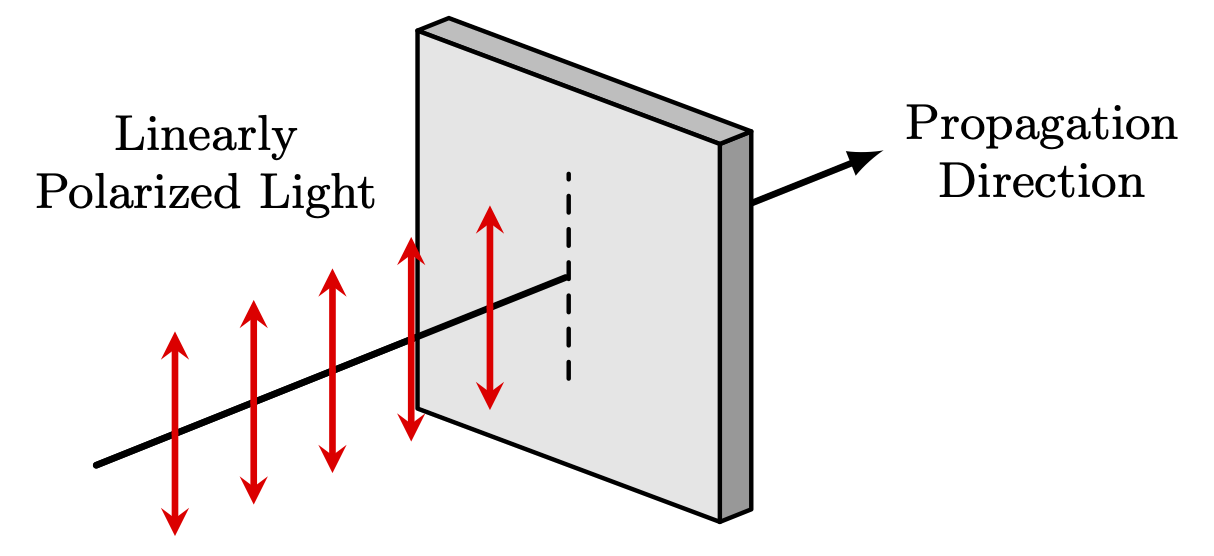Edit and compile if you like:
\documentclass[border=3pt]{standalone}
% Drawing
\usepackage{tikz}
% Tikz Library
\usetikzlibrary{3d, shapes.multipart}
% Styles
\tikzset{>=latex} % for LaTeX arrow head
\tikzset{axis/.style={black, thick,->}}
\tikzset{vector/.style={>=stealth,->}}
\tikzset{every text node part/.style={align=center}}
% Newcommand
%% Viewing Screen
\newcommand{\rect}[1]{%
\begin{scope}[canvas is xz plane at y=1.2]
\draw[thick, fill=black!40] (#1,-1.2) rectangle (#1+0.2,1.2);
\end{scope}
%
\begin{scope}[canvas is xy plane at z=1.2]
\draw[thick, fill=black!25](#1,-1.2) rectangle (#1+0.2,1.2);
\end{scope}
%
\begin{scope}[canvas is yz plane at x=#1]
\draw[thick, fill=black!10] (-1.2,-1.2) rectangle (1.2,1.2);
\draw[thick, fill=black!10, dashed] (0,-0.65) -- (0,0.65);
\end{scope}
}
%% Draw in Polar Coordinates from (0,0) to (r,theta)
\newcommand{\cdraw}[2]{\draw[very thick, -stealth, red] (0,0) -- ({#1*cos(#2)}, {#1*sin(#2)});}
% Notation
\usepackage{amsmath}
\begin{document}
\begin{tikzpicture}[x={(1cm,0.4cm)}, y={(8mm, -3mm)}, z={(0cm,1cm)}, line cap=round, line join=round]
% Main Axes
% \draw[->] (0,0,0) -- (6,0,0) node[right] {$x$};
% \draw[->] (0,0,0) -- (0,2,0) node[below left] {$y$};
% \draw[->] (0,0,0) -- (0,0,2) node[above] {$z$};
% Propagation Axis
\draw[very thick, ->] (1,0,0) -- (6,0,0) node[right, black] {\small{Propagation}\\[-0.5mm]\small{Direction}};
% Viewing Screen
\rect{4}
% Correction for 3D
\draw[very thick] (1,0,0) -- (3.98,0,0);
% Polarized Light (Red Arrows)
\foreach \i in {1.5,2,...,3.5}
{
\begin{scope}[canvas is yz plane at x=\i]
\cdraw{0.65}{90}
\cdraw{0.65}{270}
\end{scope}
}
% Node
\node at (2.5,-1,1) {\small{Linearly}\\[-0.5mm]\small{Polarized Light}};
\end{tikzpicture}
\end{document}
Click to download: linearly-polarized.tex
Open in Overleaf: linearly-polarized.tex
This file is available on GitHub.
See more on the author page of Alexandros Tsagkaropolulos.








